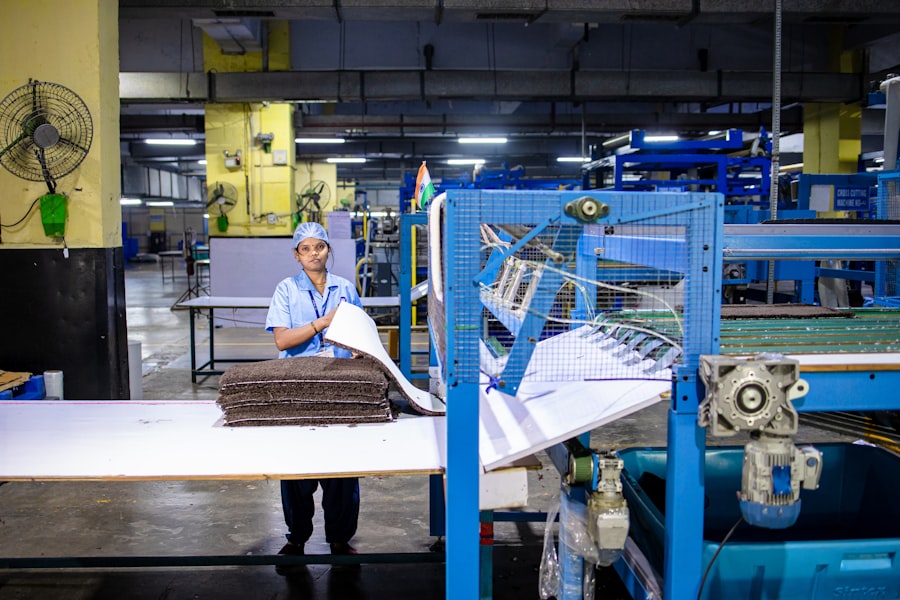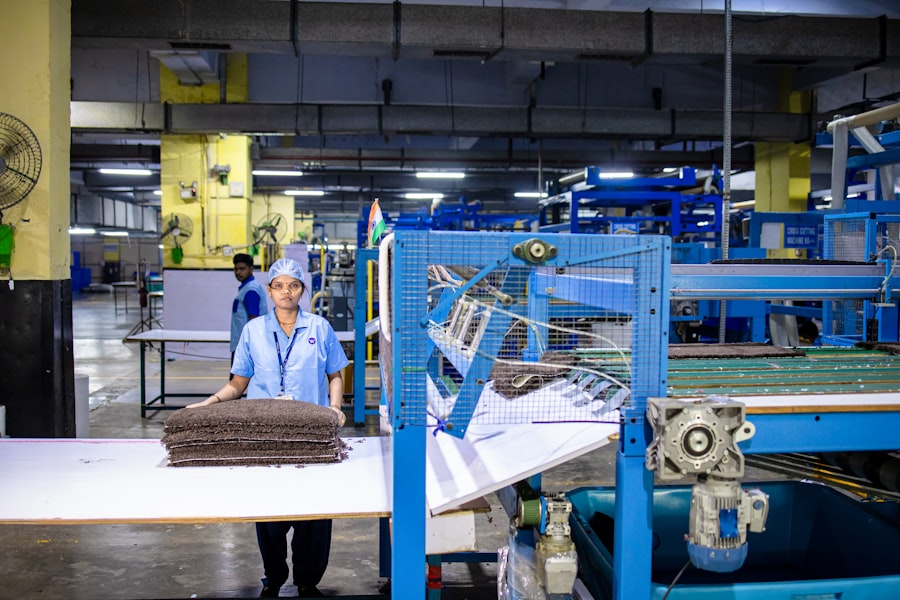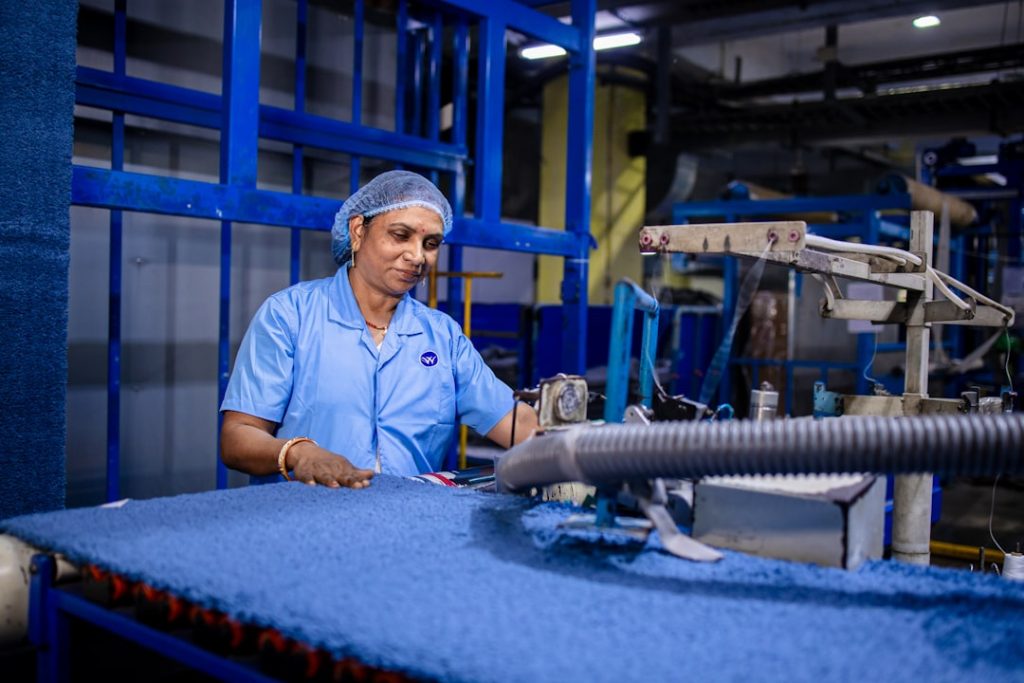Additive manufacturing (AM), commonly known as 3D printing, has emerged as a transformative force in the aerospace industry over the past decade. This technology, which builds objects layer by layer from digital models, has gained traction due to its ability to produce complex geometries that traditional manufacturing methods struggle to achieve. The aerospace sector, characterized by its demand for lightweight components and intricate designs, has found a natural ally in AM.
The rise of this technology can be attributed to several factors, including advancements in materials science, increased computational power, and a growing emphasis on sustainability. The adoption of additive manufacturing in aerospace has been accelerated by the need for rapid prototyping and reduced lead times. In an industry where time-to-market can significantly impact competitiveness, AM allows engineers to iterate designs quickly and efficiently.
For instance, companies like Boeing and Airbus have begun integrating 3D printing into their production processes, enabling them to create parts that are not only lighter but also more efficient in terms of fuel consumption. The ability to produce components on-demand also reduces inventory costs and waste, aligning with the industry’s push towards lean manufacturing practices.
Key Takeaways
- Additive manufacturing is revolutionizing the aerospace industry by enabling the production of complex and lightweight components with reduced lead times.
- Advantages of additive manufacturing in aerospace include cost savings, design flexibility, and the ability to create parts with improved performance and reduced weight.
- Challenges and limitations of additive manufacturing in aerospace include material limitations, quality control issues, and the need for standardized processes and regulations.
- Case studies highlight successful applications of additive manufacturing in aerospace, such as GE Aviation’s fuel nozzle and Airbus’s use of 3D printed components in their aircraft.
- The future of additive manufacturing in aerospace looks promising, with continued advancements in materials, processes, and technology driving further adoption in the industry.
Advantages of Additive Manufacturing in Aerospace
One of the most significant advantages of additive manufacturing in aerospace is its capacity for weight reduction. Traditional manufacturing methods often require additional material to ensure structural integrity, leading to heavier components. In contrast, AM allows for the creation of lightweight structures that maintain strength through innovative design techniques such as lattice structures and topology optimization.
For example, GE Aviation has successfully produced fuel nozzles for jet engines using AM, resulting in a part that is 25% lighter than its traditionally manufactured counterpart while also improving performance. Another key benefit of additive manufacturing is the reduction in material waste. Conventional subtractive manufacturing processes often involve cutting away excess material from a larger block, which can lead to significant waste.
In contrast, AM builds parts layer by layer, using only the material necessary for the final product. This efficiency not only lowers costs but also aligns with environmental sustainability goals. The aerospace industry is increasingly focused on reducing its carbon footprint, and the ability to minimize waste through AM is a compelling advantage that resonates with both manufacturers and regulators.
Challenges and Limitations of Additive Manufacturing in Aerospace

Despite its numerous advantages, additive manufacturing faces several challenges and limitations within the aerospace sector. One of the primary concerns is the certification and qualification of AM parts for flight. The aerospace industry is heavily regulated, with stringent safety standards that must be met before any component can be used in an aircraft.
The process of certifying 3D-printed parts can be lengthy and complex, often requiring extensive testing and validation to ensure they meet the necessary performance criteria. This regulatory burden can slow down the adoption of AM technologies, as manufacturers must navigate a labyrinth of compliance requirements. Another significant challenge is the variability in material properties associated with additive manufacturing processes.
Unlike traditional manufacturing methods that produce consistent material characteristics, AM can result in variations due to factors such as layer adhesion, cooling rates, and build orientation. These inconsistencies can affect the mechanical properties of parts, raising concerns about their reliability in critical applications. To address this issue, ongoing research is focused on developing standardized testing methods and quality control measures that can ensure the integrity of AM components used in aerospace applications.
Case Studies: Additive Manufacturing Success Stories in Aerospace
| Company | Success Story | Impact |
|---|---|---|
| Boeing | Using additive manufacturing for complex aircraft parts | Reduced production time and costs |
| GE Aviation | Producing fuel nozzles with additive manufacturing | Improved fuel efficiency and reduced weight |
| Airbus | Implementing 3D printed components in aircraft cabins | Enhanced customization and reduced weight |
Several notable case studies illustrate the successful implementation of additive manufacturing in aerospace. One prominent example is the collaboration between Airbus and Materialise, a leading provider of 3D printing solutions. Together, they developed a series of 3D-printed cabin parts for the A350 XWB aircraft.
By utilizing AM, Airbus was able to reduce the weight of these components significantly while also streamlining production processes. The project not only demonstrated the feasibility of using AM for end-use parts but also highlighted the potential for cost savings and improved supply chain efficiency. Another compelling case study is GE Aviation’s use of additive manufacturing for its LEAP engine fuel nozzle.
This component is critical for optimizing fuel efficiency and reducing emissions in modern jet engines. By employing 3D printing techniques, GE was able to consolidate 18 individual parts into a single nozzle design, resulting in a lighter and more efficient component. The success of this project has led to broader applications of AM within GE’s product lines, showcasing how innovative manufacturing techniques can drive performance improvements across the aerospace sector.
The Future of Additive Manufacturing in Aerospace
Looking ahead, the future of additive manufacturing in aerospace appears promising as technological advancements continue to unfold. One area poised for growth is the development of new materials specifically designed for AM applications. Researchers are exploring high-performance alloys and composites that can withstand extreme conditions encountered during flight while also being amenable to 3D printing processes.
These innovations could expand the range of components that can be produced using AM, further integrating this technology into mainstream aerospace manufacturing. Additionally, advancements in digital design tools and simulation software are expected to enhance the capabilities of additive manufacturing. As engineers gain access to more sophisticated modeling tools, they will be able to create even more complex geometries that optimize performance while minimizing weight.
The integration of artificial intelligence and machine learning into design processes may also lead to breakthroughs in generative design, where algorithms can autonomously generate optimal structures based on specified performance criteria.
Regulations and Standards for Additive Manufacturing in Aerospace

The regulatory landscape surrounding additive manufacturing in aerospace is evolving as the technology matures. Organizations such as the Federal Aviation Administration (FAA) and the European Union Aviation Safety Agency (EASA) are actively working to establish guidelines and standards for the certification of 3D-printed components. These regulations aim to ensure that AM parts meet safety and performance requirements while also fostering innovation within the industry.
One significant development is the establishment of industry standards by organizations like ASTM International and SAE International. These standards provide frameworks for testing and qualifying materials used in additive manufacturing processes, addressing concerns about variability and reliability. As these standards become more widely adopted, they will facilitate greater acceptance of AM technologies within aerospace manufacturing, paving the way for increased collaboration between regulatory bodies and industry stakeholders.
The Role of Additive Manufacturing in Space Exploration
Additive manufacturing holds immense potential for space exploration, offering solutions that can address some of the unique challenges faced by space missions. One key advantage is the ability to produce components on-site using local materials, which could significantly reduce launch costs associated with transporting supplies from Earth. NASA has been exploring this concept through projects like the 3D-Printed Habitat Challenge, which aims to develop technologies for constructing habitats on Mars using Martian regolith.
Moreover, AM enables rapid prototyping and production of spare parts during long-duration missions. In scenarios where resupply missions are infrequent or impossible, having the capability to manufacture components on-demand can be crucial for mission success. For instance, astronauts aboard the International Space Station have already utilized 3D printing technology to create tools and replacement parts as needed, demonstrating the practical applications of AM in space environments.
Collaborations and Innovations in Additive Manufacturing for Aerospace
The landscape of additive manufacturing in aerospace is characterized by dynamic collaborations between industry leaders, research institutions, and government agencies. These partnerships are essential for driving innovation and addressing common challenges associated with AM technologies. For example, initiatives like the National Additive Manufacturing Innovation Institute (NAMII) in the United States bring together stakeholders from various sectors to advance research and development efforts focused on AM applications.
Furthermore, companies are increasingly investing in research partnerships aimed at exploring new materials and processes for additive manufacturing. Collaborations between aerospace manufacturers and universities have led to breakthroughs in metal 3D printing techniques that enhance material properties while reducing production times. Such innovations not only benefit individual companies but also contribute to the overall advancement of additive manufacturing technologies within the aerospace sector.
As additive manufacturing continues to evolve, it will play an increasingly vital role in shaping the future of aerospace engineering and design. The combination of technological advancements, regulatory developments, and collaborative efforts will pave the way for a new era of innovation that leverages the unique capabilities of 3D printing to meet the demands of an ever-evolving industry.


